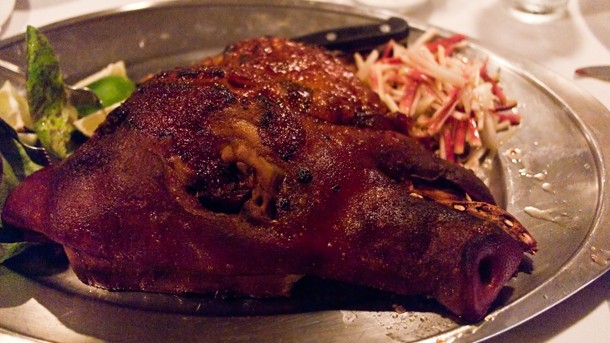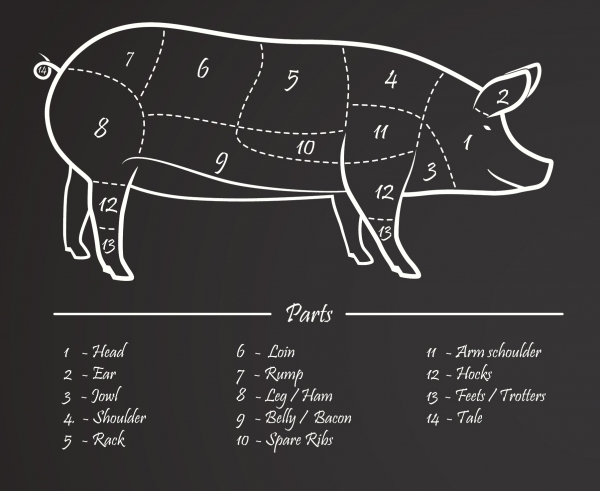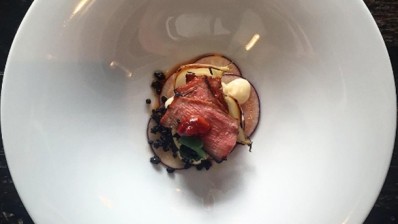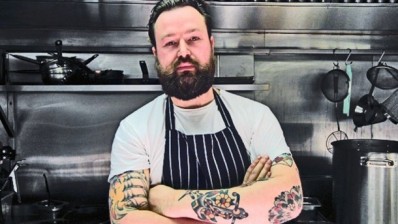TRENDS
Is the whole beast back on the menu?

Using lesser-known cuts of meat and cooking techniques to utilise as much of an animal as possible - guts, hearts and all in some kitchens – is nothing new.
In fact “nose to tail” eating, although brought to a wider public by Fergus Henderson in the mid 1990’s, has been around since people have cooked. No-one would have balked - the way recent generations have occasionally done - at the thought of eating offal, kidneys or bone marrow back in the 1920’s.
With that high percentage of diners reportedly willing to try these dishes and relatively few operators meeting that demand, could shying away from nose-to-tail be a massive business oversight when it is such a potentially lucrative trend?
But as food waste becomes an ever-more-important issue in kitchens, more and more operators appear to be going a little bit St John.
Sustainability
One reason for this surge in excitement over these ingredients is an increasing awareness amongst chefs, licensees and restaurateurs who are utilising the whole animal as an effective way make a kitchen more sustainable, whilst at the same time benefiting from the cheapness of the cuts.
Tom Tanner, of the Sustainable Restaurant Association (SRA), said: “Every year in Britain we kill 940 million farm animals for meat, but we overlook some of the best bits and end up throwing tonnes of it away – including the equivalent of 86 million chickens.”
And whilst, according to the SRA, 60% of diners say they’ve never eaten offal, half would happily indulge if offal dishes appeared on menus more often.
With that high percentage of diners reportedly willing to try these dishes and relatively few operators meeting that demand, could shying away from nose-to-tail be a massive business oversight when it is such a potentially lucrative trend?
Tanner added: “With whole pig heads costing just 50p a time and buckets of tails available for free, the ingredients are ridiculously cheap and can form the basis of more than 100 portions of a dish – assiette de porc – which can be priced at more than £20. So there is real value in making the most of all parts of the animal literally from nose to tail.”
Whilst alternative cuts of beef and lamb are available, the pig has traditionally been the focus of nose-to-tail-inclined chefs.
“[Pig] is said to be the most versatile carcass, with all but the squeak useable,” said Keith Fisher, butchery development manager at AHDB Pork.
“Stricter and efficient breeding and feeding regimes have established carcasses with lower fat levels to produce little or no waste.”
Seam butchery techniques, which allow inter-muscular fat to be removed, have also experienced a growth in popularity over the last decade – an which has created cuts that are easier to prepare and make it easier for chefs to control portion sizes, Fisher added.
Select cuts
Rather than any particular cuts being commonly neglected, it is often the case that the majority of the animal is overlooked in favour of prime cuts, according to Andrew Maxwell, managing director and principal of Tante Marie Culinary Academy.
For instance, he said: “Pigs’ ears are often considered suitable only to be dried as a dog treat. However, a salad of pig ears with a zingy Asian-style dressing can be delicious.
“With Britain currently the food waste capital of Europe it is important that we train chefs to make use of the lesser-known cuts which are not only palatable but very nutritious.”
Challenges
However, it requires a level of skill to produce dishes with these ingredients. Given the fact that the industry is in the grip of a skills shortage, it may be a while before nose-to-tail can gather momentum as a trend if chefs with the right abilities are in short supply.
Maxwell said: “With the recent growth of the casual ‘street food’ trend, the number of unskilled chefs working in the industry has increased.
“Although a concern, the upside is that consumers are beginning to demand ‘real food’ and are open to eating lesser-known cuts of meat. Hence, it is ever more important that the professional chefs setting the trends and leading the way use their influence wisely.”
He said it was absolutely crucial that working chefs who want to cook this way learned advanced butchery skills.
“[Chefs] should have an understanding of the entire process from field to plate – breeds, animal welfare and farming traditions as well as how to butcher the carcass… and ultimately deliver a superior dish.”
Knowledge vs skill
But is it really necessary that chefs acquire in-depth butchery knowledge before creating these dishes?
“While butchery knowledge is certainly useful, working with a skilled catering butcher who understands your exact requirement is paramount,” said Fisher.
“Good dialogue between chef and supplier will ensure there is no excess waste, just great cuts of meat – alternative and otherwise.”
The worry though, is that dishes containing ingredients such as duck hearts, livers, offal and kidneys will never be marketable to a mass audience.
“You need to know that you have a willing audience for the finished dish – guests who are prepared to go left-field every now and then,” said Clive Fretwell, executive chef at Brasserie Bar Co, adding that it may be wise to test interest in certain nose-to-tail dishes by advertising them first as specials rather than putting them straight on the menu.
Disconnect
Last week, the PMA spoke to Tom Griffiths, a 28-year-old Brighton chef who has taken over the kitchen of local pub the Royal Sovereign under the moniker FLANK.
Griffiths, whose dishes include the likes of ox tongue with smoked ox heart and sweet potato and turnip whip and pig’s ears with pepper and cola, is a firm opponent of squeamishness when it comes to eating.
Squeamishness, he said, was symptomatic of a lost connection between eater and meal in contemporary culture. It’s easy to forget you’re eating part of what was once a living being when it comes wrapped in plastic and ready to microwave from a supermarket.
“For some reason we’ve got this ideology in this country where we’ll walk into a supermarket and happily buy something in a packet,” he said.
“A breast that’s been skinned, breaded or marinated for us – it looks like it’s already been cooked. It’s appalling we’re educating our children to believe that’s how meat comes.”








